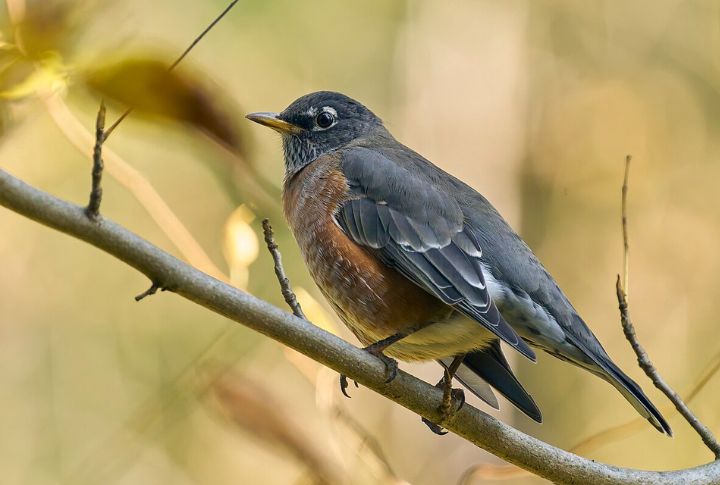
Ever walked through a forest and heard a tune so beautiful it stopped you in your tracks? That’s the magic of songbirds. Across America, these feathered musicians bring nature’s symphony to life. Get ready to meet 20 of the most astonishing songbirds and discover what makes their songs unforgettable!
Northern Mockingbird
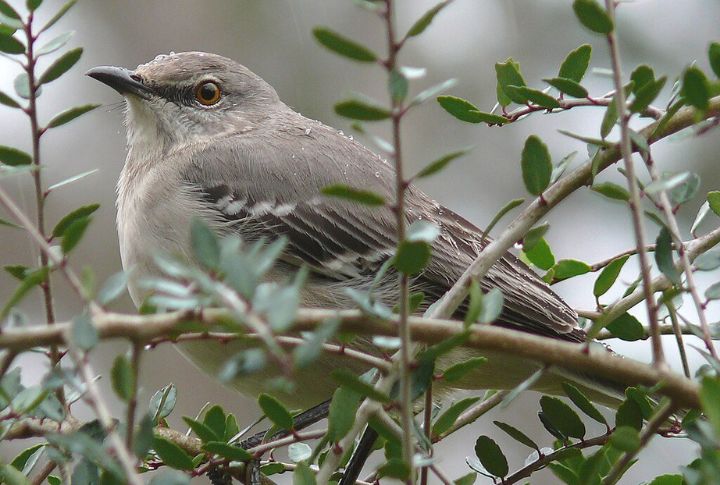
Just imagine a bird that constantly expands its playlist. The Northern Mockingbird mimics other birds, frogs, and even car alarms. Found in backyards and city parks, it keeps audiences guessing with endless vocal tricks. Listen closely; you never know what it might sing next!
American Robin

Before the sun fully rises, the American Robin is already awake, filling the air with its cheerful melody. Its rolling, whistling tune signals the arrival of spring. You’ll often find this orange-breasted bird hopping across lawns, hunting worms while delivering its unmistakable song. It’s a true early riser of the avian world.
Eastern Bluebird
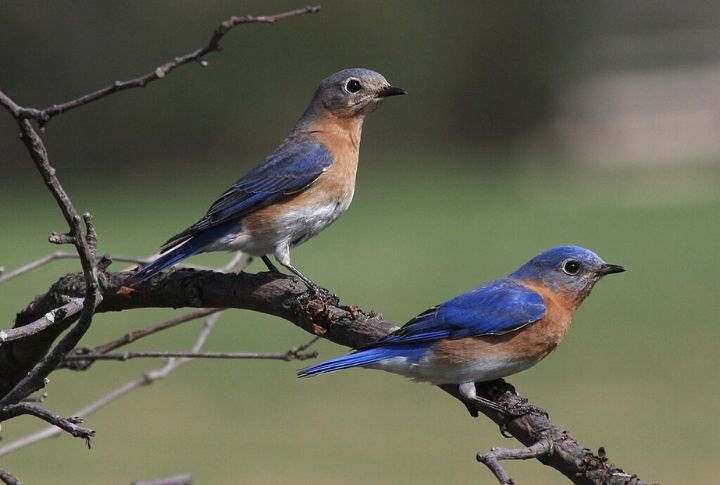
Eastern Bluebirds sing with clarity. Delicate and bold, each call floats through the air with purpose, never rushed. From a quiet perch, the bluebird delivers a fluid, melodic call that travels easily on a light wind, often heard across open fields and rural edges.
Western Meadowlark
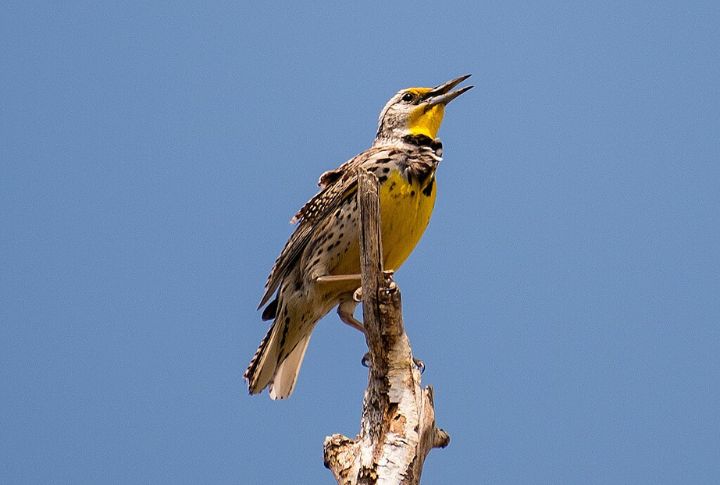
Golden fields sway in the wind, and suddenly, a rich, bubbling song spills into the open air. That’s the Western Meadowlark, the sound of the American prairie. Its call rises and falls like rolling hills, a song so beloved that multiple states claim it as their official bird.
Song Sparrow
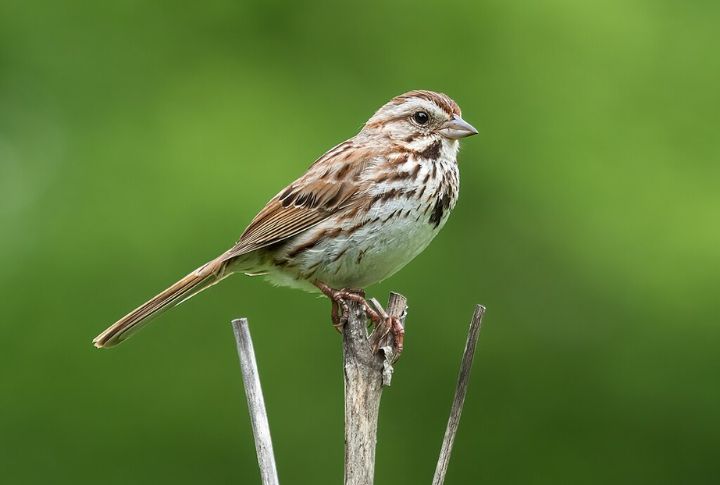
A tiny body with bold lungs that skips rehearsal and yet still dazzles. No two verses match, and that’s by design. The Song Sparrow performs anywhere from meadows to backyards. Why repeat perfection when you can reinvent it? Nature gave it range, and it uses every note.
Wood Thrush

Deep in the woods, a hauntingly beautiful song echoes through the trees. The Wood Thrush doesn’t just sing; it layers notes and creates a melody that sounds almost like a flute. Scientists marvel at its ability to harmonize with itself, and we are mesmerized by the sheer capabilities of the vocal cords.
Black-Capped Chickadee
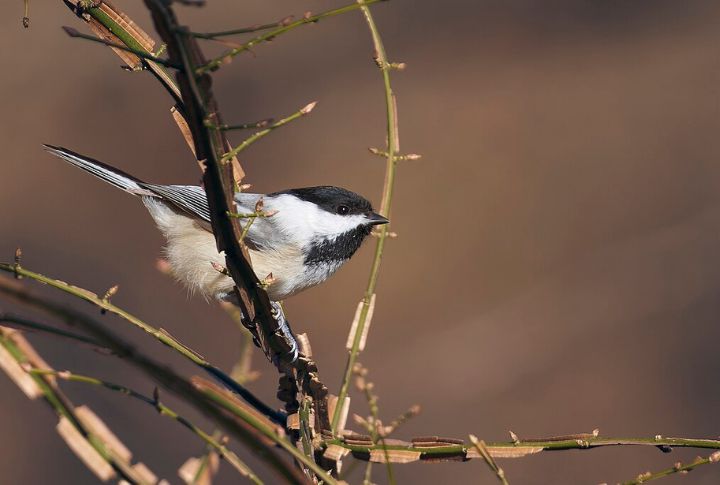
Who says small birds can’t have big voices? The Black-Capped Chickadee may be tiny, but its signature “fee-bee” whistle carries through forests and backyards alike. Curious and bold, you’ll find it often flits close to humans, sharing its cheerful tune without hesitation.
Baltimore Oriole
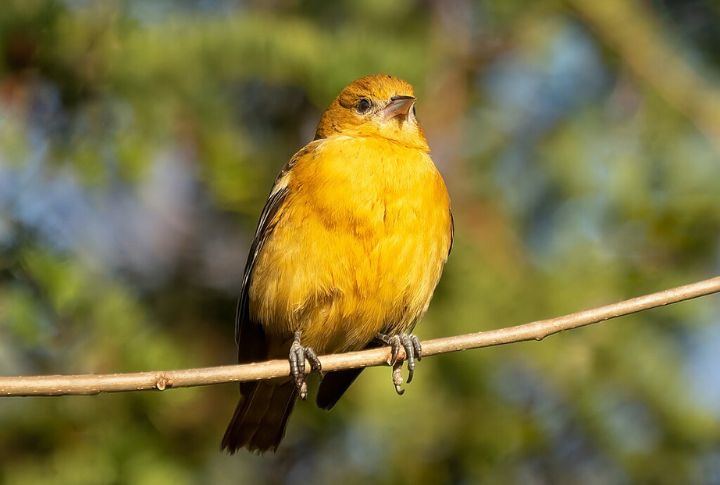
The Baltimore Oriole is impossible to ignore, with bright orange feathers and a song just as good. This bird produces tonal, melodic sequences that carry clearly across the forest canopy. Often spotted near orchards and gardens, the Oriole adds color and music to the American summer.
Hermit Thrush
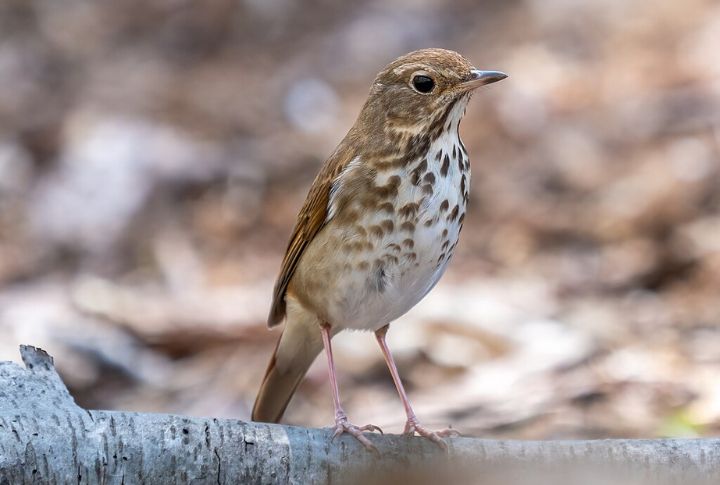
Some songs feel otherworldly, and the Hermit Thrush’s tune is one of them. It rings through mountain forests with a delicate, echoing quality, as if nature itself is singing along. Its ethereal song has inspired poets and composers alike—one listen, and you’ll understand why.
Scarlet Tanager
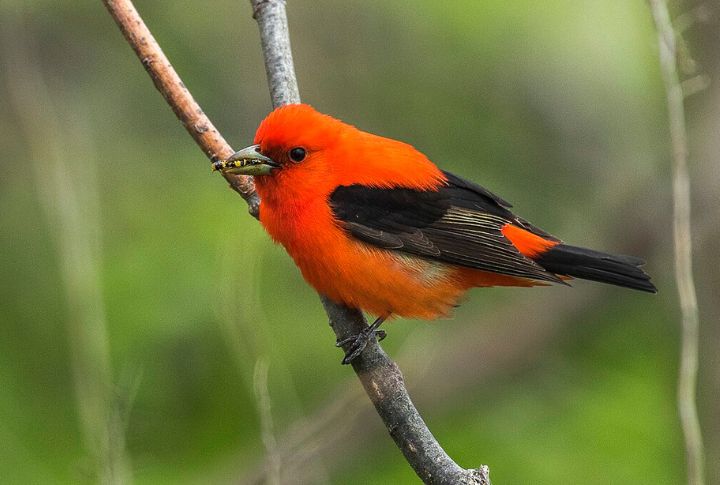
Deep in the canopy, a burst of red flickers between the leaves. The Scarlet Tanager is a beauty to behold, but its song is equally alluring, a rough, robin-like melody that carries through the treetops. Spotting one is a rare treat, but hearing it is just as special.
House Finch
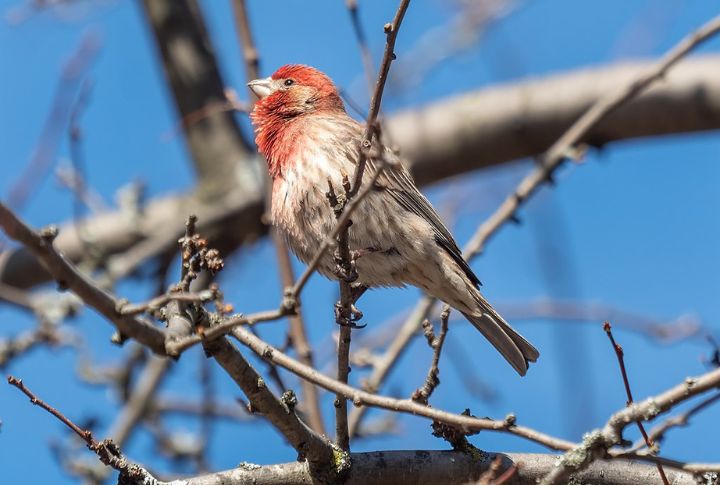
In cities, suburbs, and farmlands, House Finches are everywhere, filling the air with their rapid chirps. These little birds love to sing from rooftops and transform everyday space into concert venues. If you live in America, chances are you’ve already heard their cheerful chatter.
Indigo Bunting

A tiny bird that looks like a flying sapphire? Meet the Indigo Bunting. Its song is a bright, bubbly warble that spills from treetops at sunrise. Found along roadsides and open fields, the Bunting turns summer mornings into musical performances.
Brown Thrasher
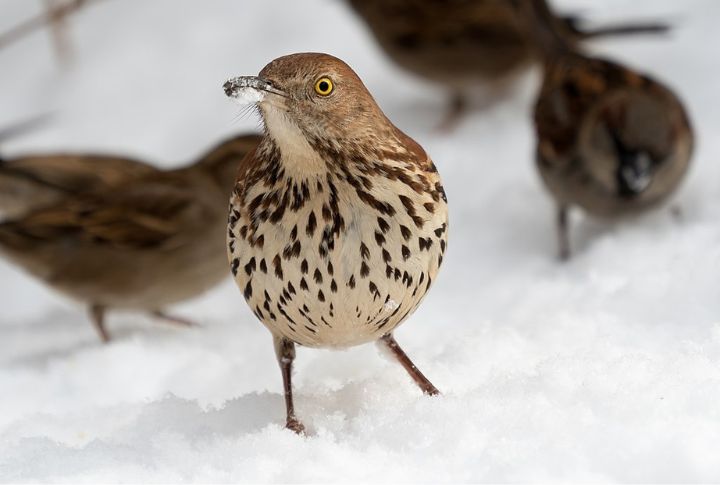
If birds had a freestyle competition, the Brown Thrasher wouldn’t just win; it’d retire the trophy. This bird sings in rapid-fire phrases, never repeating the same line twice. With over 1,000 different songs in its playlist, it’s one of nature’s most versatile vocalists.
Carolina Wren
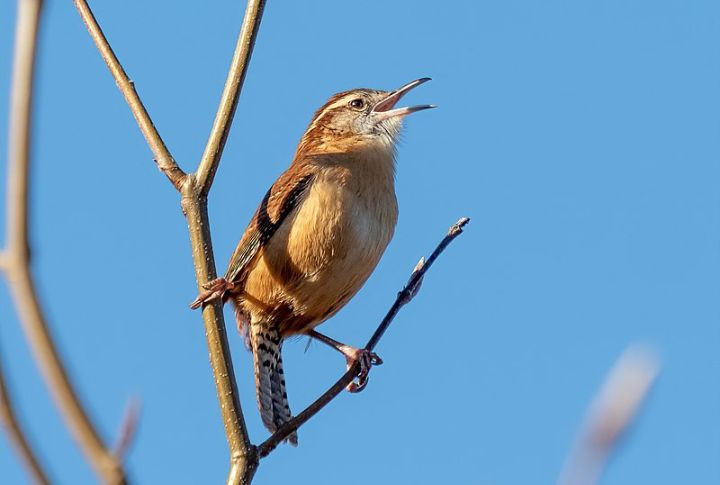
The Carolina Wren produces remarkably high-decibel calls that travel efficiently through dense vegetation. Found throughout eastern North America, it adapts well to urban and suburban habitats. The species exemplifies acoustic adaptation as they use sounds to maintain territory and communication in visually obstructed environments.
White-Throated Sparrow
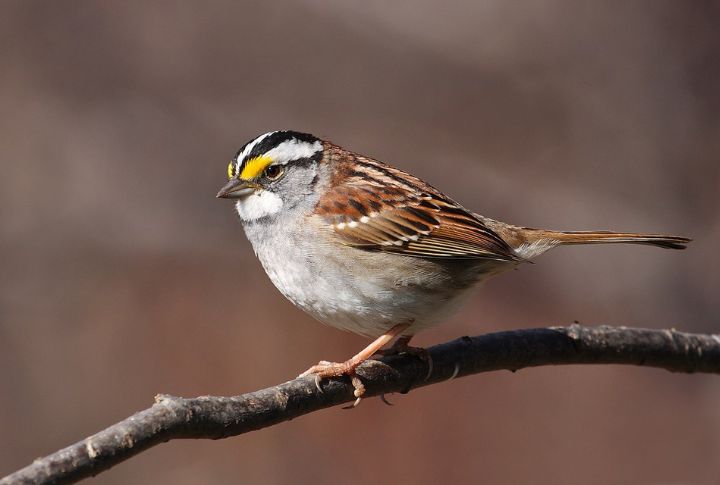
Have you ever heard a bird whistle a phrase that sounds like “Oh sweet Canada, Canada?” That’s the White-Throated Sparrow! Those clear, whistling notes float through forests and fields, instantly recognizable to anyone who’s spent time outdoors. Follow the sound, and you’ll likely spot this charming singer.
Cedar Waxwing
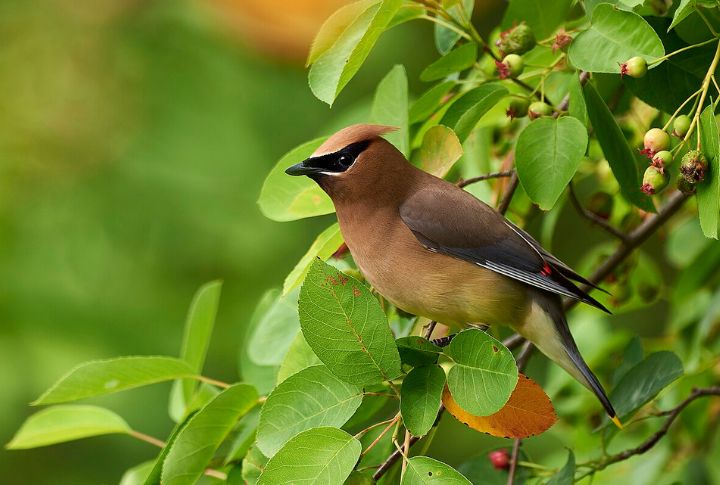
Unlike other loud songbirds, the Cedar Waxwing keeps its tone subtle. It blends a series of soft, high-pitched whistles seamlessly with the rustling leaves. Often seen in groups, these sleek birds create a chorus of delicate sounds, proving that not all great music needs to be loud.
Northern Cardinal
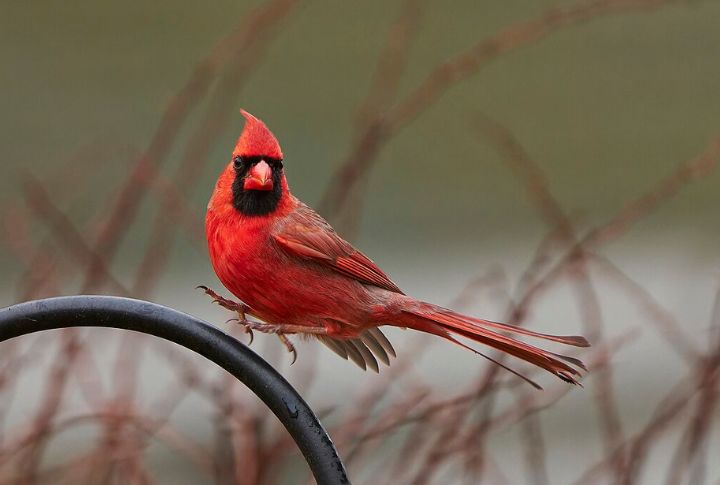
Meet the Northern Cardinal, the bird with no concept of a “quiet time.” Picture this: it’s a chilly morning, everything’s calm—and then, BAM! A burst of loud, clear calls shatters the peace. Nature’s alarm clock, yes. But it’s way more charming and a lot harder to snooze.
Common Yellowthroat
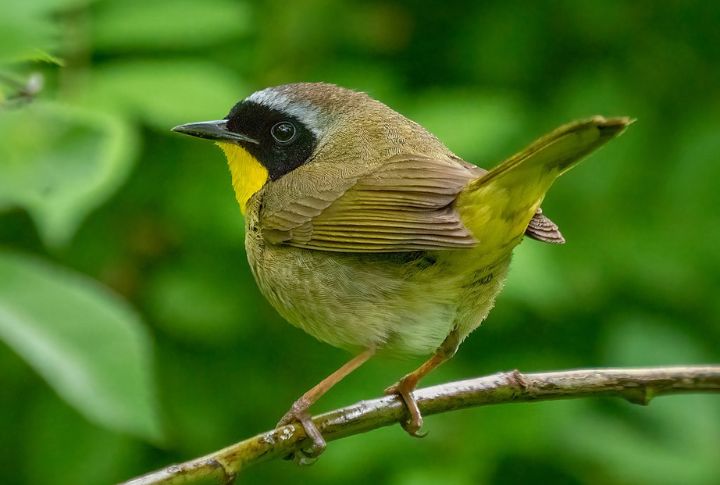
A tiny yellow flash vanishes into the reeds. Hear a “witchety-witchety-witch”? That playful tune usually means a Common Yellowthroat is nearby. It’s quick, sneaky, and rarely still, but listen closely; you’ll catch it chatting from deep inside the brush.
Red-Winged Blackbird

If you’ve ever been near a marsh or pond, you’ve probably heard the Red-Winged Blackbird’s signature “conk-la-ree!” Its call rings out from reeds and cattails, a bold announcement of its presence. The blackbird isn’t just singing but staking its claim in the wetland chorus.
Canyon Wren
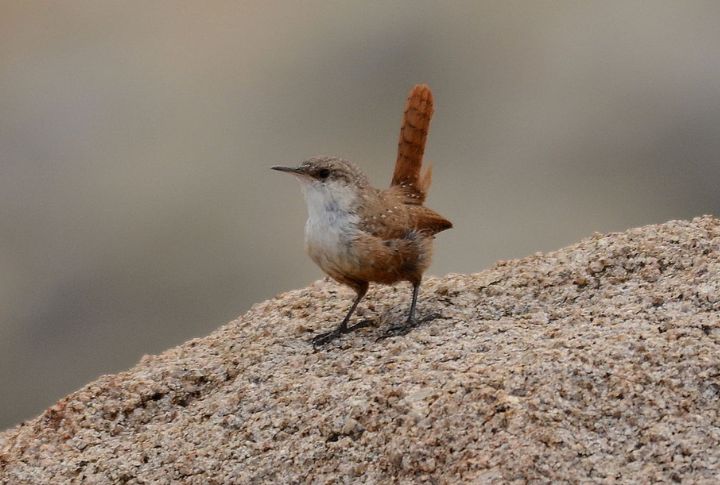
You’ll hear it before you see it—a musical series of notes tumbling down the canyon walls like they’re chasing each other. With a rust-colored body blending seamlessly into the rugged terrain, Canyon Wren fills silent desert cliffs year-round in the western U.S. with a mesmerizing melody.
